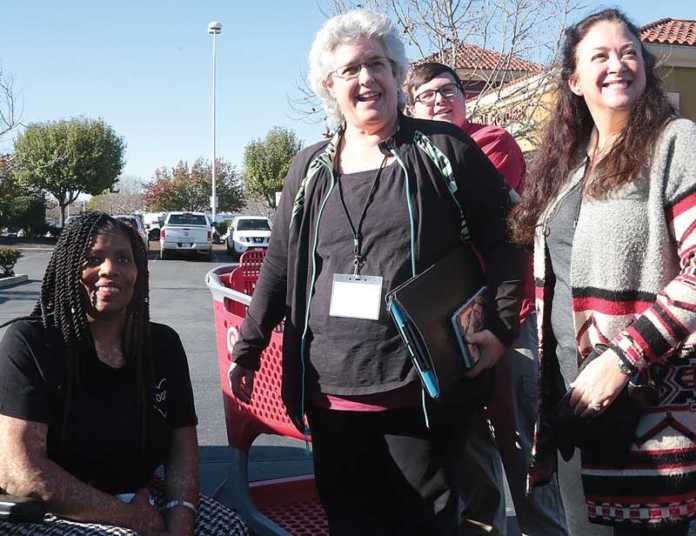WATSONVILLE — After living in Watsonville Nursing Center for nearly three years, Rosalie Strong spent her first night in her new apartment on Dec. 28, a step that seemed an unattainable dream just a few months ago.
While Strong will need help with day-to-day tasks such as cooking, she will be free once again to make her own decisions and set her own schedule.
Strong, 53, was working, living on her own and supporting her children before a series of medical maladies confined her to a wheelchair and required long-term care in the facility.
But her residency there also had an unintended consequence: because her social security payments went to pay for her stay in the facility, she had little income. In addition, she lost her Section 8 housing voucher since she was out of housing for more than six months.
Worse, getting on the waiting list for another voucher can take as long as eight years. Even assuming she got a voucher, however, there was no guarantee she would get housing, since it is so difficult to find accommodations for people in wheelchairs.
“I was stuck there,” Strong said.
Strong’s new life comes thanks to the cooperation of several local and state agencies, a process that started when her doctor realized she could live independently.
The doctor, who is part of Dignity Health, reached out to social worker Kim De Serpa, who also works with 85 doctors in advocating for patients with health, mobility and quality-of-life issues.
The first step, De Serpa said, was to get the hard-to-obtain Section 8 voucher.
That came thanks to the Housing Authority of Santa Cruz County, which runs the Disabled Transitioning out of Institutions program.
“This is the biggest joy for me in my job,” De Serpa said of getting patients such as Strong into independent living situations. “This is like a life-changing miracle.”
The next step in this somewhat confused conglomeration of red tape was contacting Santa Cruz-based Health Projects Center, which in turn runs California Community Transitions (CCT).
The stated goal of that organization is to help move adults stuck in long-term care back to their homes and communities.
Perhaps the most compelling part of Strong’s story is that her case was the final one before the CCT program ended.
“This is nothing short of miraculous,” Health Projects Center Associate Director Mitch Matthews said. “There were a lot of stars that lined up to make this happen.”
And so it was that CCT helps with Strong’s rent, while the Housing Authority paid for her security deposit.
Still other state funds helped her furnish and stock her apartment and receive visits from care providers.
Now that she is stepping out on her own, Strong said she has been surprised by the things she has discovered.
“I haven’t paid a bill in over three years,” she said. “I didn’t know you could talk to Google. I didn’t know you could use an app to pay for food or buy groceries.”
Strong said she will miss the people in the nursing home, including her 104-year-old roommate, who she plans to visit.
She also plans to volunteer in the office of her housing complex.
“That will give me something to do,” she said.
After an afternoon shopping trip Dec. 28 to Target to load up supplies for her new apartment, Strong had praise for the people who helped her get there.
“Without these people involved, this never would have happened,” she said. “I’m very humbled, grateful and appreciative for everything they’ve done. I’m truly blessed.”













